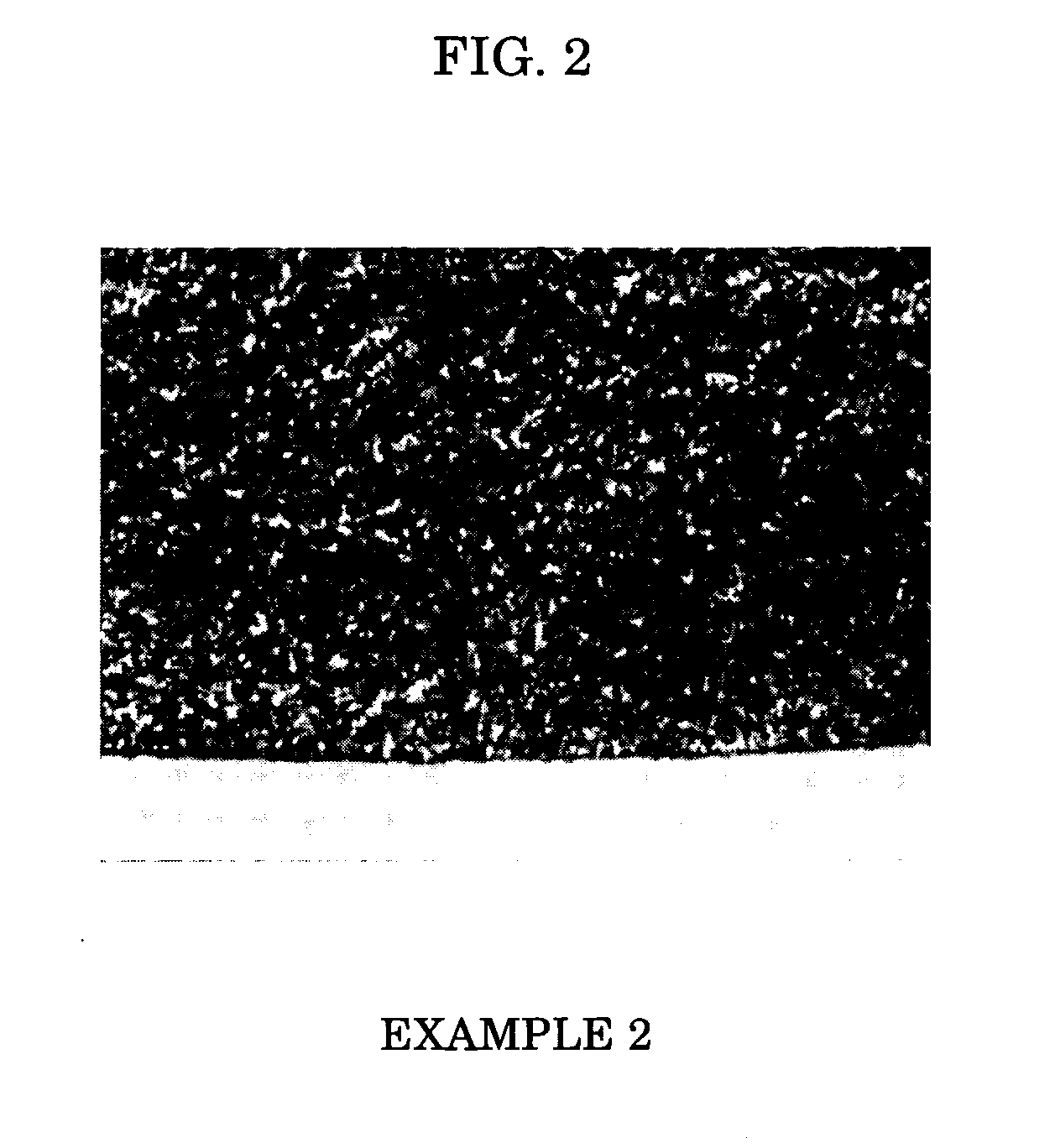Conductive roll and method for producing same
a technology of conductive rolls and conductive sheets, which is applied in the direction of corona discharge, physical/chemical process catalysts, instruments, etc., can solve the problems of incongruity with the electrical resistance value of the conductive sheets, poor image of printing products obtained by printing with the use of this conductive sheets, and decrease in the vicinity of raw materials for urethane viscosity
- Summary
- Abstract
- Description
- Claims
- Application Information
AI Technical Summary
Benefits of technology
Problems solved by technology
Method used
Image
Examples
example 1
[0052] Three parts by weight of VULCAN XC (Cabot Corp.) was added as a conducting agent to 100 parts by weight of PP-2000 (SANYO CHEMICAL INDUSTRIES) as a polyether-based polyol, and dispersed until a particle size of 20 μm or less was reached. To the mixture, 0.01 part by weight of NEOSTAN U-340 (dibutyltin bisisononyl-3-mercaptopropionate, NITTO KASEI), which is a tetravalent organotin-based catalyst and has a tin content of 16.5% by weight, was added as a curing catalyst. The mixture was temperature-controlled to 80° C., and then defoamed and dehydrated for 6 hours under reduced pressure to obtain an A solution. Separately, 4 parts by weight of diphenylmethane diisocyanate and 12 parts by weight of Colonate C-HX (Nippon Polyurethane Industry) were added to and mixed with 20 parts by weight of SF8427 (Dow Corning Toray Silicone). The mixture was reacted for 15 minutes at 120° C., and temperature-controlled to 80° C. to obtain a B solution. The A solution and the B solution were mi...
example 2
[0055] Four parts by weight of TOKABLACK #5500 (TOKAI CARBON) and 3 parts by weight of VULCAN XC (Cabot Corp.) were added to 100 parts by weight of GP-3000 (SANYO CHEMICAL INDUSTRIES) as a trifunctional polyether-based polyol, and dispersed until a particle size of 20 μm or less was reached. To the mixture, 0.01 part by weight of NEOSTAN U-340 (dibutyltin bisisononyl-3-mercaptopropionate, NITTO KASEI), which is a tetravalent organotin-based catalyst and has a tin content of 16.5% by weight, was added as a curing catalyst. The mixture was temperature-controlled to 80° C., and then defoamed and dehydrated for 6 hours under reduced pressure to obtain a C solution. Separately, 11 parts by weight of Colonate C-HX (Nippon Polyurethane Industry) was added to and mixed with 25 parts by weight of Prepolymer Adiprene L100 (UNIROYAL), and the mixture was temperature-controlled to 80° C. to obtain a D solution. The C solution and the D solution were mixed, and poured into a φ23 mm iron pipe mol...
example 3
[0058] A conductive roll of Example 3 was produced in the same manner as in Example 2, except that 0.01 part by weight of U-360 (dibutyltin bisisooctylthioglycollate, NITTO KASEI), which is a tetravalent organotin-based compound and has a tin content of 18.7%, was added as a curing catalyst instead of NEOSTAN U-340.
PUM
| Property | Measurement | Unit |
|---|---|---|
| Fraction | aaaaa | aaaaa |
| Percent by mass | aaaaa | aaaaa |
| Electric potential / voltage | aaaaa | aaaaa |
Abstract
Description
Claims
Application Information
 Login to View More
Login to View More - R&D
- Intellectual Property
- Life Sciences
- Materials
- Tech Scout
- Unparalleled Data Quality
- Higher Quality Content
- 60% Fewer Hallucinations
Browse by: Latest US Patents, China's latest patents, Technical Efficacy Thesaurus, Application Domain, Technology Topic, Popular Technical Reports.
© 2025 PatSnap. All rights reserved.Legal|Privacy policy|Modern Slavery Act Transparency Statement|Sitemap|About US| Contact US: help@patsnap.com



